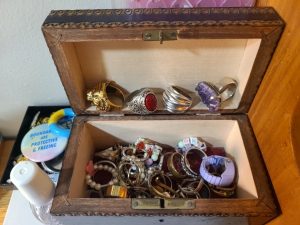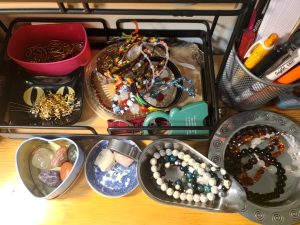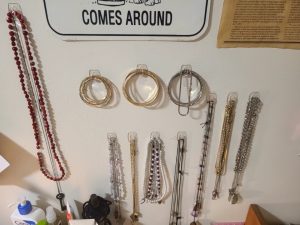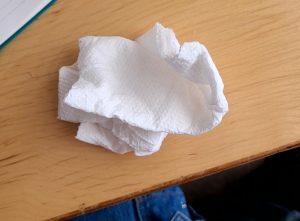I collect jewelry, I have about 65 bracelets and necklaces, 30 rings, 20 pairs of earrings, and about 35 nose studs/rings. I make jewelry and in my family, there has been a tradition of passing on jewelry, and for many years I have acquired a growing selection of jewelry. I see this as a way for me to connect with my spirituality while also bringing personal enjoyment. I adorn myself with jewelry because I think that it is a beautiful form of expression. Over time I have also gotten more piercings that have allowed for different sub-sections of my collection. I have significantly downsized my jewelry since moving out, but there is still a large amount of pieces that I currently have in my space. I think that someone could definitely make the argument that this is a form of hoarding, seeing that it takes up a large amount of space and that I have a personal connection with almost all of my pieces. It was very hard for me to leave some of my jewelry behind and I also have lots of tools to make more pieces. My collection does not usually affect my cleaning routines, but it is very easy to make a mess with jewelry; I find myself leaving jewelry on different surfaces and forgetting about it until I need to use the surface. Despite these worries, I will continue my collection because it is something that is important in my life and gives me personal satisfaction.



